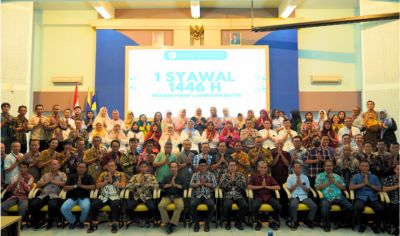Title: RESOURCE SELECTION DECISIONS AND THE FACTORS THAT INFLUENCE THEM.
Author: Utami Wahyu Lestari
Item Type : Thesis (Thesis)
Affiliations: Master of Management Study Program, Faculty of Economics and Business, Universitas Airlangga , Surabaya, Indonesia
Publisher: Universitas Airlangga
Abstract
This research is motivated by a company development life cycle, namely the introduction, growth, maturity and decline stages. One cycle that is interesting to observe is the company's growth stage. In the growth cycle, the company experiences market tests, namely conditions where sales continue to increase and market share becomes wider. As a result, the company's working capital increases and when it reaches full capacity, investment in fixed assets is required. Therefore, companies need large sources of funds to finance their growth. So how does a company finance its growth if its financing exceeds sustainable growth or the strength of the financial resources owned by the company at a certain time. The purpose of this research is to determine the decision to select funding sources for manufacturing companies when the company is in a condition where actual sales growth exceeds sustainable growth and the factors that influence it. Therefore, this research is directed to determine the relationship between the decision to select funding sources and actual sales growth that exceeds sustainable growth in manufacturing companies listed on the Jakarta Stock Exchange. In this research, there are three alternative decisions regarding selecting sources of funds, namely retained earnings, debt and shares. In addition, to determine the influence of actual sales growth, total asset turnover, leverage, and information asymmetry factors on the decision to select funding sources between internal and external funding sources and between debt and stock funding sources in manufacturing companies that have actual sales growth that exceeds sustainable growth. . The population of this research is all manufacturing companies listed on the Jakarta Stock Exchange in 1993-1996, while the target population is manufacturing companies that have actual sales growth exceeding sustainable growth, namely 37 companies. To determine the relationship between the decision to select a funding source and actual sales growth that exceeds sustainable growth, chi-square analysis was used with a significance level of (a) 5%. Furthermore, to determine the influence of actual sales growth, total asset turnover, leverage, and asymmetry information factors on the decision to select funding sources between internal and external funding sources and between debt and equity funding sources, logit analysis (logistic regression) was used with a significance level of (a) 5 %. The research results show that there is a significant relationship between the decision to select funding sources and actual sales growth exceeding sustainable growth in manufacturing companies listed on the Jakarta Stock Exchange. In the contingency table, it can be seen that manufacturing companies tend to use external funding sources in the form of debt to meet their financing needs when the company experiences actual sales growth that exceeds sustainable growth during the 1993-1996 period. Logit I analysis proves that there is a negative influence of actual sales growth factors on the decision to select funding sources between internal and external funding sources. This shows that the higher the actual sales growth, the company tends to choose to use external funding sources. On the other hand, the lower the actual sales growth, the company tends to choose to use internal funding sources. Meanwhile, logit analysis 11 proves that there is a positive influence of the total asset turnover factor and asymmetry of information on the decision to select funding sources between debt and equity funding sources in manufacturing companies that have actual sales growth that exceeds sustainable growth. This shows that the higher the total asset turnover and information asymmetry, the company tends to choose to use debt funding sources. On the other hand, the lower the total asset turnover and information asymmetry, the company tends to choose to use stock funding sources.
Keywords: Financing Decision, Fund Resources, Actual Sales Growth, Sustainable Growth.
Sources: http://repository.unair.ac.id/34787/

























